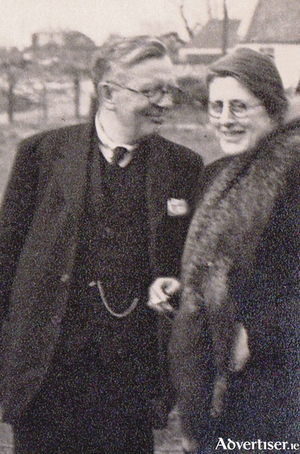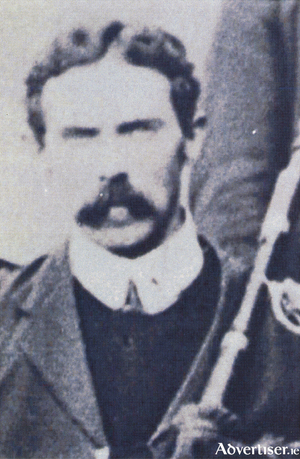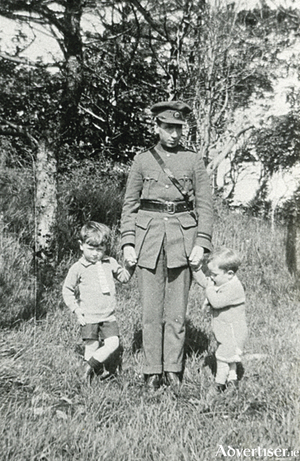Search Results for 'Seamus Carter'
5 results found.
Geraldine Plunkett and Tom Dillon

Geraldine Plunkett was a daughter of Count George Noble Plunkett and a sister of Joseph Mary Plunkett. She became Joe’s aide-de-camp and knew all the 1916 leaders. She and Joe lived in Larkfield cottage in Kimmage where they stored guns and ammunition, and a lot of drilling, etc, occurred. Joe brought in Michael Collins to help her with the family accounts.
Seamus Carter, athlete, Gaeilgóir, patriot

Seamus Carter was a fluent Irish speaker who was a member of the Gaelic League since its inception. He was the secretary of the Oireachtas when it was held in Galway in 1913, the famous photograph of which hangs in the Town Hall.
‘The Galway Resolution’ - An attempted coup by some county councillors
On December 3 1920, at the height of the War of Independence, quite an extraordinary event happened in Galway County Council. It passed a resolution, known as ‘The Galway Resolution’, repudiating the authority of the newly established Dáil; it rescinded the resolution for the collection of rates, (which were collected locally, and passed on to Dáil Éireann, and not to the British authorities), and incredibly, Galway County Council now offered its offices to negotiate peace, directly with the British prime minister, David Lloyd George.
George Nicholls, Rising organiser and volunteer
George Nicholls was a young solicitor who worked in G.C. Conroy’s office in Francis Street. In 1912, he set up a pipe band known as “Cumann Píobairí naGaillimhe”, the only band with an Irish language name to play at O’Donovan Rossa’s funeral to which they travelled in the company of Padraic Pearse.
Mícheál Ó Droighneáin, 1916 veteran

Mícheál Ó Droighneáin was born in Spiddal. He left school when he was 14 and got a job in McCambridge’s for 6d a week. Lady Killanin convinced him to go back to school and he became a monitor, went on to training college in Dublin, and it was there he became a Nationalist. “I became a member of the IRB towards the end of 1910 when I was teaching in Dublin [from August 1910 to January 1913]. Then I came to my native place, teaching in Spiddal for one year and then coming to Furbo.”

